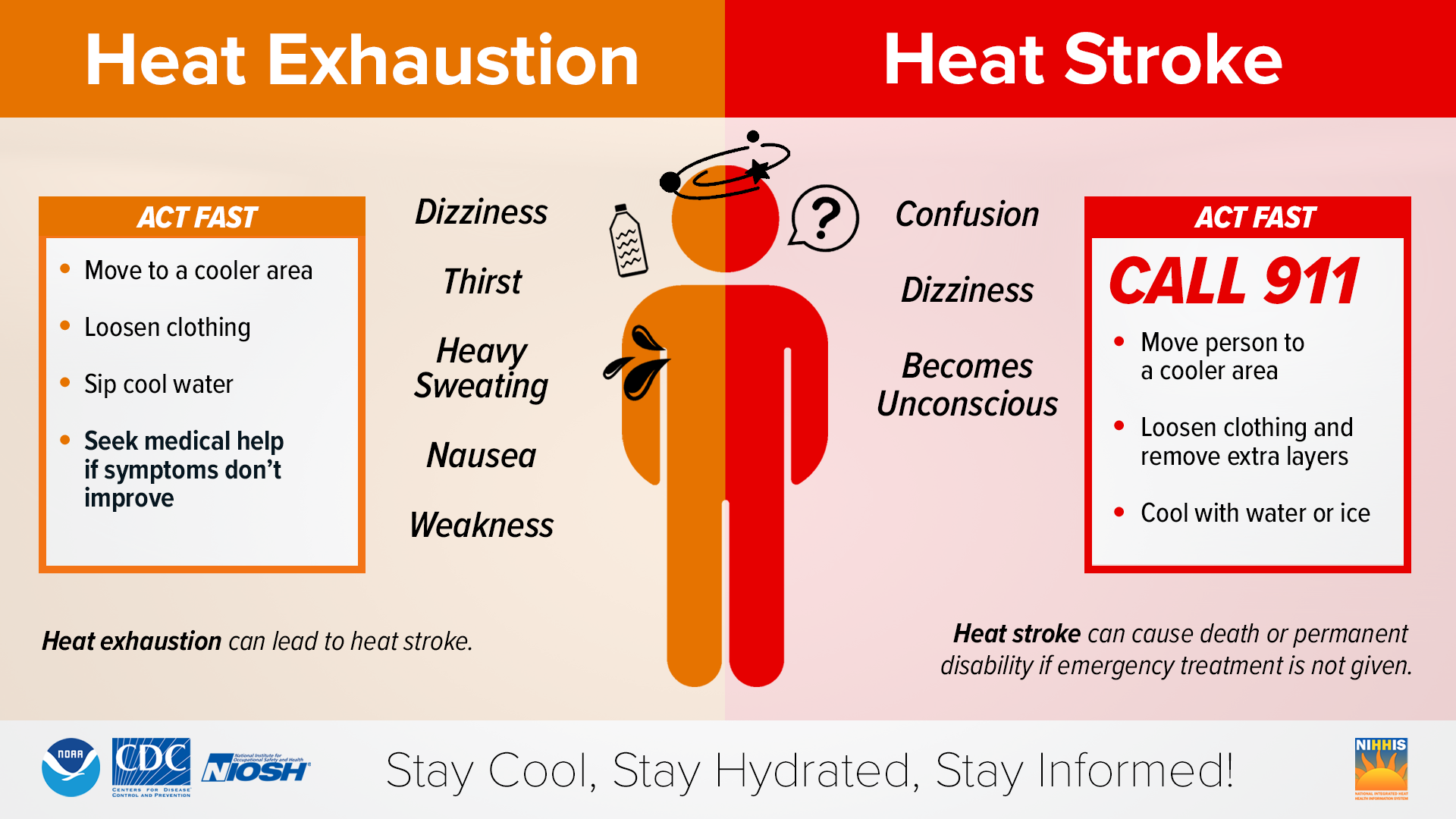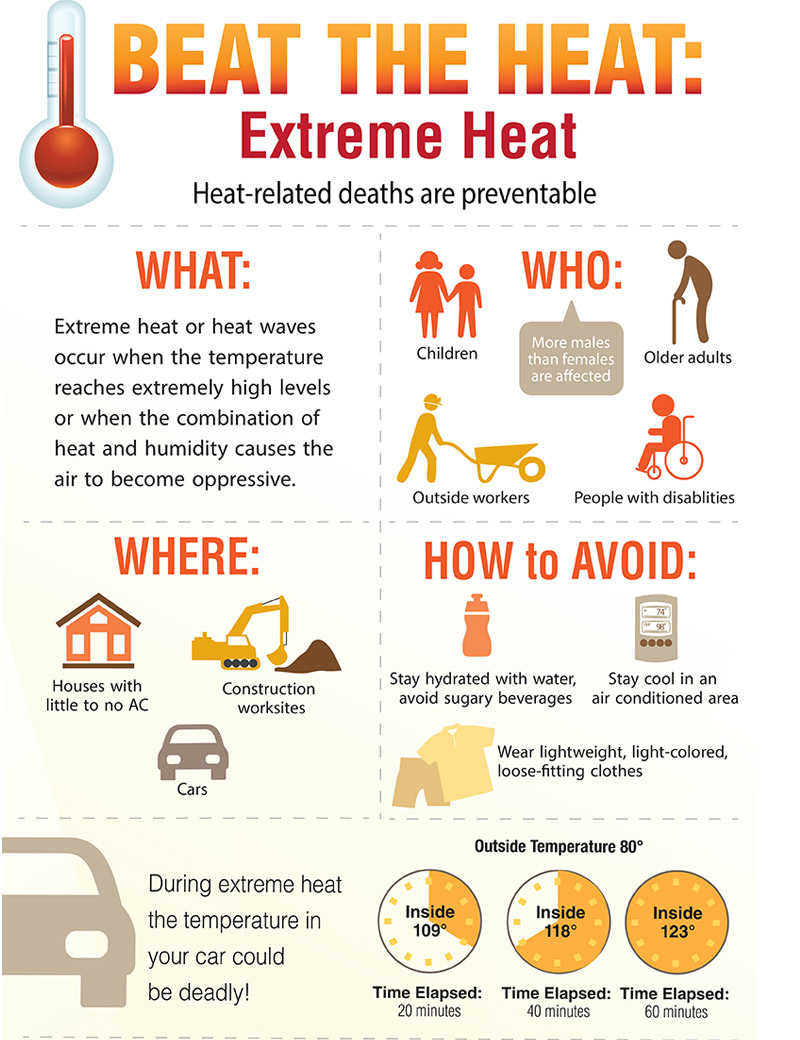

Much of the eastern portion of the country is experiencing their first true heat wave of the season as high temperatures soar well into the 90s and heat indices pass the tripple-digit mark over the coming. With this just being the start of the summer season, additional periods of extreme heat will continue to be a hazard heading into peak season in the coming weeks. As the heat and humidity starts creeping in, it's important to recognize the dangers of prolonged exposure to extreme heat.
In fact, according to the U.S. Centers for Disease Control and Prevention (CDC) extreme heat kills around 1,220 people in the U.S. every single year. Those most at risk of complications from extreme heat? Typically older adults, infants, the very young, and persons with mental illnesses or chronic diseases. In this article we'll break down everything you need to know about the "heat index" means, the dangers of extreme heat and potential illnesses that result from it, and more importantly some ways to mitigate your risk and keep you and your loved ones safe this season!
In the summer, the combination of heat and relative humidity makes the air temperatures feel much hotter than what it actually is reported to be. This is what we call the "heat index." Most of us are probably quite familiar with the term and understand that the greater the humidity (moisture content of the air) and the higher the air temperature, the higher the corresponding heat index will be. Attached below is a handy heat index chart you can use, which shows the perceived temperature on your body at a given air and dewpoint temperatures. The higher the dewpoint temperatures, the higher potential to hold more moisture in the air. While heat is relative to geographical location (ie. triple digits more likely across the Desert Southwest than the Northeast), note that a fairly typical summertime high temperature of 90 degrees can feel like well over 100 degrees if the humidity is high enough!
Normally, our bodies regulate internal temperatures naturally through perspiration (Sweating) and the corresponding cooling process that results from the evaporation of that sweat. However, as humidity and temperatures skyrocket, this process of evaporation slows down, making it much harder for the body to regulate internal temperatures. This can turn quite dangerous over time if proper procedures are not taken to cool ourselves down and will result in various heat related illnesses.

Extreme heat has it's dangers, and if one of the most common one is a hot vehicle. Most of us would not dare leave a child or pet in a sweltering car during the midst of summer, yet every year about 40 children die in hot cars due to heat stroke according to the National Highway Traffic Safety Administration (NHTSA), all of which is preventable. Did you know? The inside of a car can rise to a dangerous temperature of 109 degrees after 20 minutes with an outside air temperature of just 80 degrees? After 1 hour? Air temperatures inside the car can surge to deadly levels of 123 degrees! The graph below from the National Weather Service St. Louis, MO office shows just how hot your car can get overtime. We go into more details on the danger of hot cars here. In any case, always remember to check the back seat before getting out of your car, not only during the summer but even in the spring and fall months.

Image courtesy of National Weather Service St. Louis, MO
Outdoor extreme heat also results in high levels of stress on the body, and prolonged exposure without taking the necessary precautions will lead to heat related illnesses such as cramps, heat exhaustion, and even heat stroke. While less serious, heat cramps are the first sign of your body getting dehydrated and an impending heat related illness occurring. Left untreated, and this will ultimately lead to heat exhaustion and finally heat stroke. Proper first aid involves applying pressure to or massaging the affected area(s) and taking sips of water, unless the person becomes nauseous. Heat exhaustion and heat stroke are much more serious conditions and require immediate attention. Understand that heat stroke is a medical emergency, and the victim must be cooled down and have 911 called for them to be brought to a hospital for immediate treatment.

Image courtesy of National Weather Service/Center for Disease Control
Check out this handy graphic from the CDC above regarding the signs / symptoms and differences between heat exhaustion and heat stroke, as well as necessary steps to take if someone is experiencing symptoms. Additional information on heat related illnesses can be found here: https://www.cdc.gov/extreme-heat/signs-symptoms/index.html
Here are some helpful tips to beat the heat, stay safe, and mitigate your risk to heat related illnesses this summer season:

Image courtesy of the Center for Disease Control